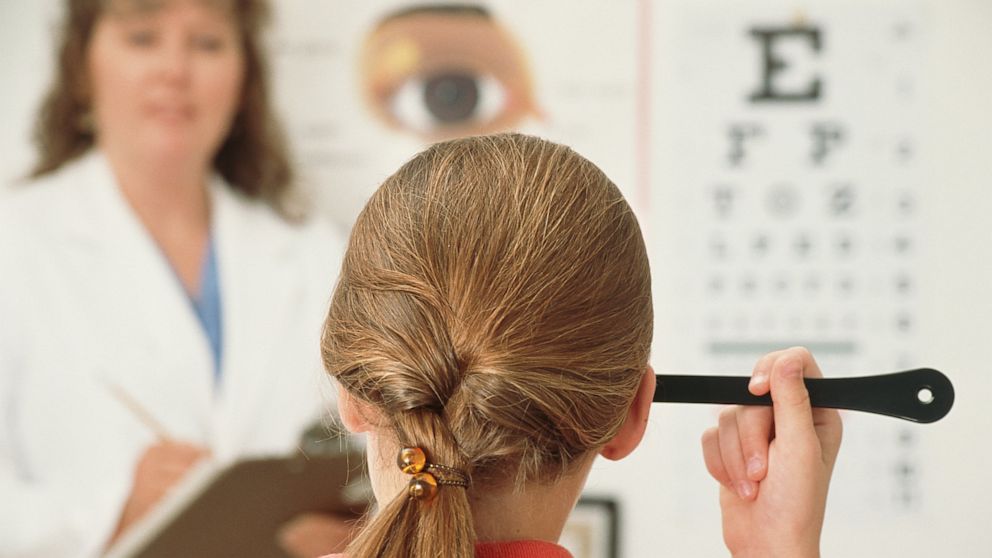Common Eye Problems, Solved
See clearly into your next decade and beyond.

Sept. 5, 2013— -- intro: Thanks to new technology—from disposable contacts to LASIK—it has never been easier to guarantee perfect vision without having to wear clunky specs or reading glasses. (And even if frames are your thing, you can get trendy ones cheaper than ever through mail-order sites, like warbyparker.com.) The latest science can also keep unsightly crow's-feet and dark circles at bay.
But while it's great to look and see better, you want your eyes to feel better, too, whether it's by preventing itchy, watery allergy symptoms or staving off age-related eye diseases. So we went on a vision quest to round up the tests, treatments and warning signs you need to know about so you'll see clearly into your next decade and beyond.
Could You Have MS? 16 Multiple Sclerosis Symptoms
quicklist: 1category: Common Eye Problems, Solvedtitle: Presbyopiaurl: text: The Lowdown
Presbyopia—difficulty making out close objects, like writing on a menu or digits on a phone—usually sets in by the time you're 40. That's because, as you age, the lens of your eye gradually starts to lose flexibility. (Farsightedness, or hyperopia, has a similar effect but is due to the shape of your eye and is usually something you're born with.) Unfortunately, there's nothing you can do to prevent it.
What It Feels Like
Your vision is blurred at a normal distance. You may also notice eye strain and headaches when you're doing close-up work, like sewing.
How to Fix It
Although presbyopia is a natural condition, you should still see your eye doctor when you notice it to make sure you don't have a more serious condition, like glaucoma, says Bruce Rosenthal, MD, professor of ophthalmology at the Mount Sinai School of Medicine. If it is presbyopia, he'll likely recommend reading glasses.
Already wear glasses or contacts? Relax: You won't have to switch to old-fashioned granny glasses, thanks to new bifocal contact lenses and glasses known as no-line bifocals, which use progressive, multifocus lenses and look like regular specs.
quicklist: 2category: Common Eye Problems, Solvedtitle: Allergic conjunctivitisurl: text: The Lowdown
If you have seasonal allergies, you recognize this as the annoying redness and itchiness that afflict your eyes in response to pollen from grass, trees or ragweed. You might also get these symptoms if you're allergic to pet dander or mold.
"When the allergen comes into contact with your eyes, it causes cells known as mast cells to release histamine and other substances," causing swelling and wateriness, explains Richard Weber, MD, president of the American College of Allergy, Asthma and Immunology.
What It Feels Like
Itchy, red, watery eyes. You might also have other allergy symptoms, like sneezing.
How to Fix It
An eye doctor or an allergist can prescribe prescription antihistamine eyedrops and, if needed, oral antihistamines (available either over-the-counter or by prescription).
"Just avoid over-the-counter redness drops—they work by constricting blood vessels in your eye, and you can develop a rebound effect—when you stop using them, the vessels dilate again," Dr. Weber says.
21 Reasons Why You're Losing Your Hair
quicklist: 3category: Common Eye Problems, Solvedtitle: Dry eye syndromeurl: text: The Lowdown
This condition occurs when you don't naturally produce enough tears to lubricate your peepers.
"It's very common among women in their late 30s and early 40s, probably because of hormonal changes such as a decrease in estrogen and testosterone production leading into perimenopause," says Robert Cykiert, MD, an ophthalmologist at NYU Langone Medical Center.
Certain meds—like antidepressants, antihistamines and decongestants—can also dry out your eyes, as can cold outdoor air.
What It Feels Like
A scratchy, gritty sensation. You may also have red eyes and blurred vision.
How to Fix It
You can usually treat mild symptoms with an over-the-counter, preservative-free artificial tear solution, like Alcon's. If that doesn't work, see your eye doctor, who can prescribe eyedrops called Restasis.
Wear contacts? Consider switching to daily disposables: One study found they improved dry eye by about 20 percent.
For severe cases, your doc might recommend prescription eye inserts, which release a lubricant. You can also take an omega-3 supplement, which research suggests may ease symptoms, adds Jimmy Lee, MD, director of refractive surgery at Montefiore Medical Center in New York City.
Health.com: 20 Ways to Stop Allergies [http://www.health.com/health/gallery/0,,20361208,00.html]
quicklist: 4category: Common Eye Problems, Solvedtitle: Conjunctivitisurl: text: The Lowdown
We're talking about pinkeye—inflammation or infection of the conjunctiva, a thin layer of tissue that lines the inside of your eyelid. The most common cause is a virus, usually an adenovirus—the same type that causes respiratory infections. There's also bacterial conjunctivitis, caused by staph bacteria from contaminated eye makeup or touching your eye with germy hands.
What It Feels Like
One or both eyes will be red, puffy, painful and swollen. The viral kind produces watery discharge, while a bacterial infection usually leads to thick, yellowish-green gunk.
How to Fix It
See your eye doctor promptly, since these symptoms can also indicate a corneal infection. If it's viral, your eyes should revert back to normal within a week or two, though your doctor can prescribe steroid eyedrops for relief if you're in serious pain. Bacterial pinkeye usually clears up with a course of prescription antibiotic drops.




